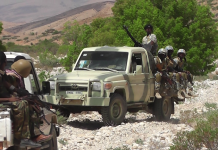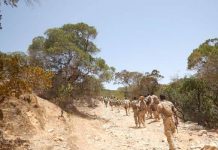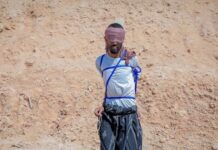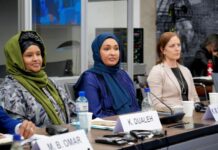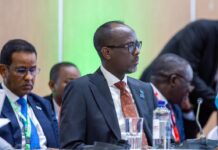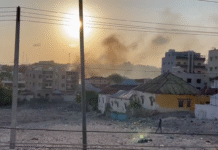US Marine Corps General Thomas D Waldhauser told the US Senate Armed Services Committee US African Command (Africom) last week that successful advancement of US interests in Africa was “best achieved with stable nations on the continent”.
He was testifying before the committee as part of the Africom’s posture statement to Congress and will also appear before the House Armed Services Committee in coming weeks on the continental command.
“Accountable governments, well-trained and disciplined militaries with a respect for the rule of law and human rights and growing economies are cornerstones to this stability. Over the past year, consistent with the updated national strategies, US Africa Command revised our strategic approach to effectively strengthen our African partners by evolving security co-operation from a focus on crisis response to capability and capacity building against our new strategic priorities: state fragility, increased involvement of China and Russia, VEO (violent extremist organisations) expansion, and threats to US access and influence,” he said.
Africom has five priority objectives. These are having African partners contribute to regional security; reducing threats from VEOs and transnational criminal organisations; ensuring US access and influence; aligning forces, authorities, capabilities, footprints and achievements and protecting US personnel and facilities on the continent.
Waldhauser said VEOs are a serious threat to the shared interests of the US, Africom and its partners and allies.
“VEOs and criminal networks prey on disenfranchised populations, creating a cycle of recruitment and allowing extremists ideology to fester. Extremist networks also exploit criminal networks for illicit transport of narcotics, weapons and persons. VEOs cultivate and encourage an environment of distrust, despair and hopelessness to undermine governments allowing for expansion of their radical ideology.”
The four star general told representatives Somalia remained “key to the security environment of East Africa”.
“Assessing Somalia, it is important to understand incremental progress made over the last decade as the result of a truly international effort in the country. The US works closely with international partners, including the United Nations, European Union, African Union, AMISOM and troop contributing countries, the United Kingdom, Turkey and others on security sector development efforts. Together, we remain committed to Somali-led progress on improving conditions for a well-trained Somali National Security Force that can assume and sustain security within the country.
“The US continues to target al Shabaab and ISIS Somalia. US military activities in Somalia include remote or accompanied advise and assist missions; building, training and equipping of Somali combat units and when necessary, kinetic action. The effects of our kinetic activities serve to disperse al Shabaab and ISIS Somalia leadership, disrupt how they communicate and further decentralise how they conduct operations. Ultimately, our kinetic activities, encouraged and supported by the Federal Government of Somalia, create opportunities for governance to take hold.”
On Libya, Waldhauser said Africom had three objectives. These are to assist in “degrading” terrorist groups such as AQIM and ISIS Libya; prevent widespread civil conflict and support the political reconciliation process.
As far as the Sahel is concerned he said “dangerous pockets of extremists control numerous under-governed spaces”.
“The African-led, French-assisted and US-supported G5 Sahel Joint Force comprised of forces from Burkina Faso, Chad, Mali, Mauritania and Niger is a successful example of burden sharing.
“The US provides bilateral security assistance for the countries of the G5 Sahel Joint Force and US Africa Command contributes operational planning support to compliment funding and operational assistance provided by European allies to the G5 Sahel Joint Force. US Africa Command remains committed to assisting the African-led operations to degrade VEOs and build defence capabilities within the G5 Sahel Joint Force and, in turn, build capabilities of individual countries in the joint force.”


